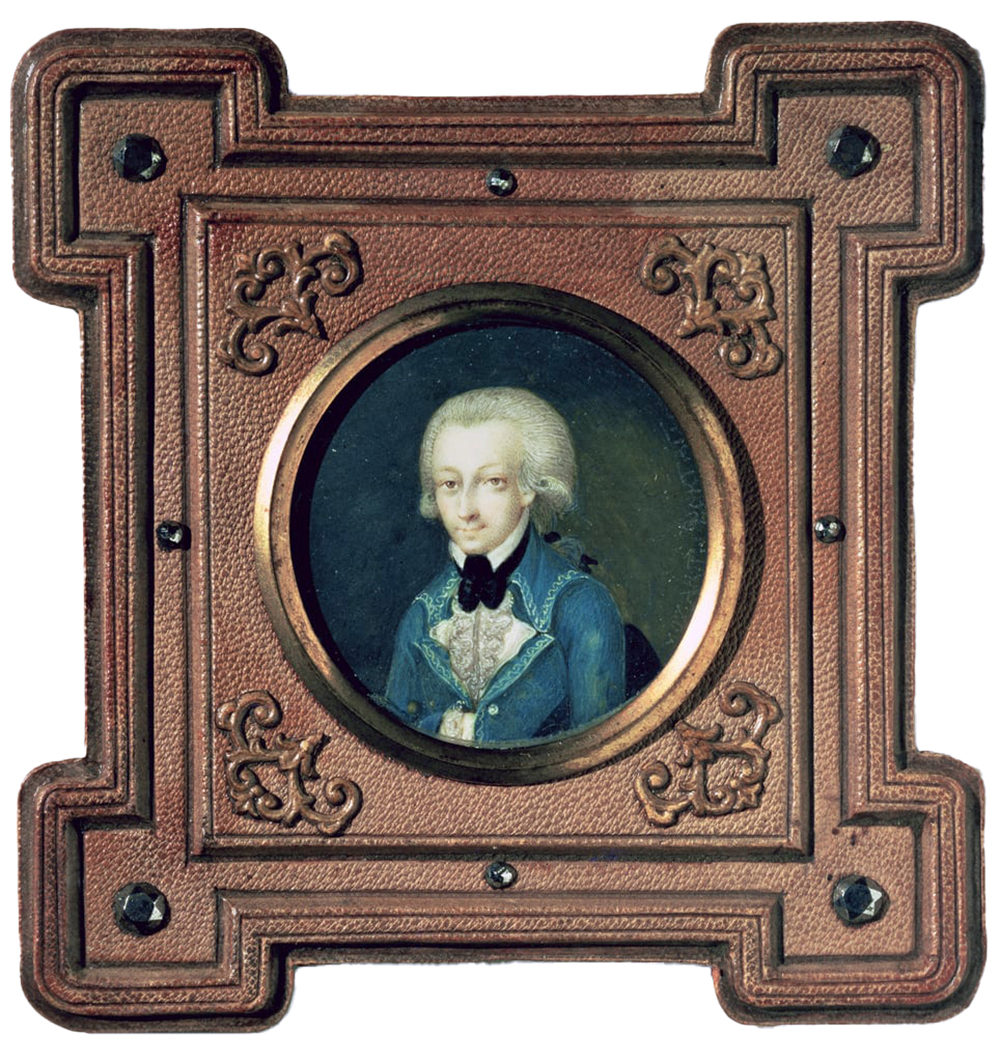
The Classical period was an era of classical music between roughly 1730 and 1820.

A symphony is an extended musical composition in Western classical music, most often written by composers for orchestra. Although the term has had many meanings from its origins in the ancient Greek era, by the late 18th century the word had taken on the meaning common today: a work usually consisting of multiple distinct sections or movements, often four, with the first movement in sonata form. Symphonies are almost always scored for an orchestra consisting of a string section, brass, woodwind, and percussion instruments which altogether number about 30 to 100 musicians. Symphonies are notated in a musical score, which contains all the instrument parts. Orchestral musicians play from parts which contain just the notated music for their own instrument. Some symphonies also contain vocal parts.

Sir Colin Rex Davis was an English conductor, known for his association with the London Symphony Orchestra, having first conducted it in 1959. His repertoire was broad, but among the composers with whom he was particularly associated were Mozart, Berlioz, Elgar, Sibelius, Stravinsky and Tippett.

István Kertész was an internationally acclaimed Hungarian orchestral and operatic conductor who, throughout his brief career led many of the world's great orchestras, including the Cleveland, Chicago, Philadelphia, New York, Los Angeles, Pittsburgh, Detroit, San Francisco and Minnesota Orchestras in the United States, as well as the London Symphony, Vienna Philharmonic, Berlin Philharmonic, Royal Concertgebouw Orchestra, Israel Philharmonic, and L'Orchestre de la Suisse Romande. His orchestral repertoire numbered over 450 works from all periods, and was matched by a repertoire of some sixty operas ranging from Mozart, Verdi, Puccini and Wagner to the more contemporary Prokofiev, Bartók, Britten, Kodály, Poulenc and Janáček. Kertész was part of a musical tradition that produced fellow Hungarian conductors Fritz Reiner, Antal Doráti, János Ferencsik, Eugene Ormandy, George Szell, János Fürst, Ferenc Fricsay, and Sir Georg Solti.

Symphony No. 40 in G minor, K. 550 was written by Wolfgang Amadeus Mozart in 1788. It is sometimes referred to as the "Great G minor symphony", to distinguish it from the "Little G minor symphony", No. 25. The two are the only extant minor key symphonies Mozart wrote.

The Symphony No. 25 in G minor, K. 183/173dB, was written by the then 17-year-old Wolfgang Amadeus Mozart in October 1773, shortly after the success of his opera seria Lucio Silla. It was supposedly completed in Salzburg on October 5, a mere two days after the completion of his Symphony No. 24, although this remains unsubstantiated. Its first movement is widely known as the opening music in Miloš Forman's film Amadeus.

Great Mass in C minor, K. 427/417a, is the common name of the musical setting of the mass by Wolfgang Amadeus Mozart and considered one of his greatest works. He composed it in Vienna in 1782 and 1783 after his marriage when he moved to Vienna from Salzburg. This large-scale work, a missa solemnis, is scored for two soprano soloists, a tenor and a bass, double chorus and large orchestra. It remained unfinished, missing large portions of the Credo and the complete Agnus Dei.

Jan Walter Susskind was a Czech-born British conductor, teacher and pianist. He began his career in his native Prague, and fled to Britain when Germany invaded the city in 1939. He worked for substantial periods in Australia, Canada and the United States, as a conductor and teacher.
The Juno Award for "Classical Album of the Year" for ensembles has been awarded since 1985, as recognition each year for the best classical music album in Canada.
Hans Graf is an Austrian conductor.
The Mostly Mozart Festival is an American classical music festival based in New York City. The festival presents concerts with its resident ensemble, the Mostly Mozart Festival Orchestra, principally at David Geffen Hall of the Lincoln Center for the Performing Arts. Other festival concerts occur at such venues as:

Louis Langrée is a French conductor. He is the son of organist and theorist Alain Langrée. One of his sisters is an amateur cellist.
The Symphony in F major "No. 42", K. 75, was probably written by Wolfgang Amadeus Mozart from March to August 1771 in Salzburg.
The Symphony in F major "No. 43", K. 76/42a, was probably written by Wolfgang Amadeus Mozart.
The Symphony in C major "No. 46", K. 96/111b, was probably written by Wolfgang Amadeus Mozart in 1771 in Milan.
The Symphony in D major "No. 45", K. 95/73n, was probably written by Wolfgang Amadeus Mozart in 1770 in Rome.
The Symphony in D major "No. 47", K. 97/73m, was probably written by Wolfgang Amadeus Mozart in 1770 in Rome.
The Symphony in A minor "Odense", K. Anh. 220/16a, was formerly attributed to Wolfgang Amadeus Mozart. It is one of only three symphonies possibly by Mozart to be in a minor key.

Mozart in the Jungle is an American comedy-drama web television series developed by Roman Coppola, Jason Schwartzman, Alex Timbers, and Paul Weitz for the video-on-demand service Amazon Video. The show received a production order in March 2014.









